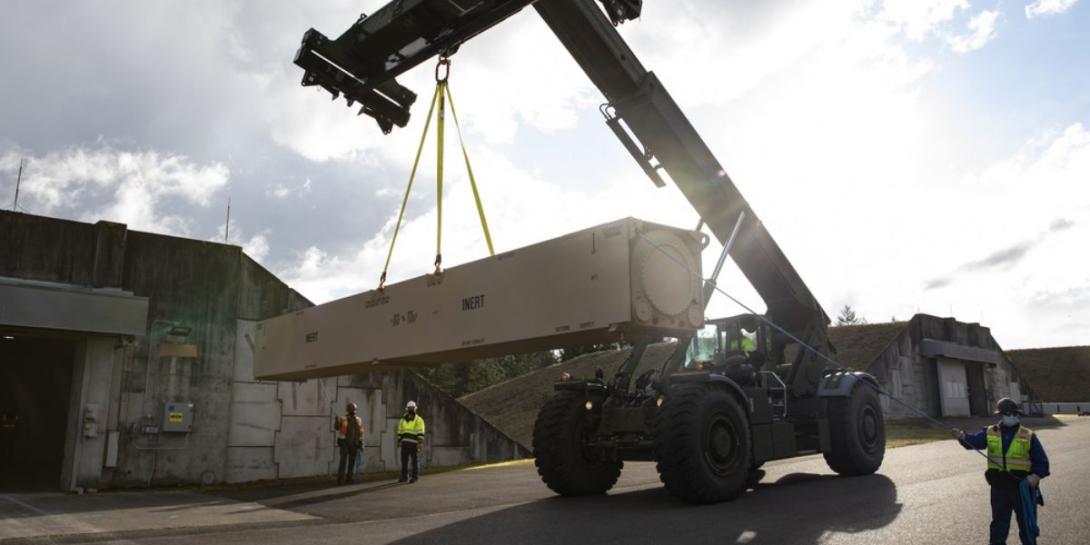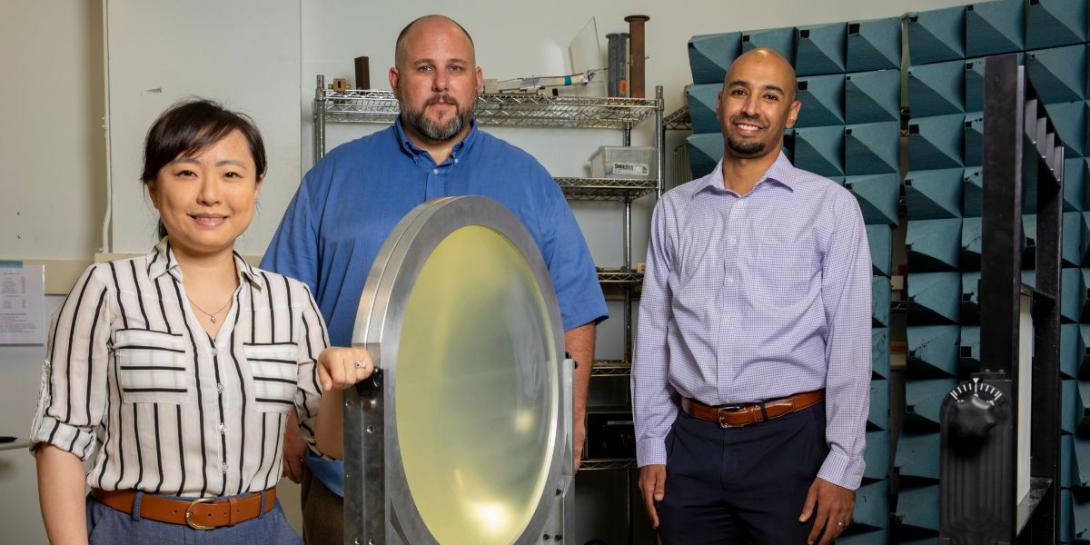Hypersonics Research Soars
To create hypersonic vehicles that can fly at speeds at least above Mach 5 requires fabrication of materials and systems that can withstand extreme temperatures that reach thousands of degrees, the associated thermal expansion and traveling at 60,000 feet, among other conditions. The Defense Department’s University Consortium for Applied Hypersonics has some U.S. universities examining solutions to address the pressing challenges of hypersonic flight. One team, Georgia Institute of Technology’s College of Engineering and the Georgia Tech Research Institute—which is conducting hypersonics applied research over the next three years under four grants totaling $6 million—is focusing on high-temperature materials science, aerospace and mechanical engineering issues, radio frequency radomes, vehicle controls, window materials and improvements in temperature measurement capabilities, explains Georgia Tech’s Devesh Ranjan, professor and Eugene Gwaltney chair for the Woodruff School of Mechanical Engineering. It truly requires a multidisciplinary approach, he says.
Ranjan also serves as a co-director of the University Consortium for Applied Hypersonics, or UCAH, and the consortium’s $100 million total Defense Department funding.
“Let’s say that you are moving at Mach 15,” says Ranjan. “You might be at 3,000 degrees Celsius at the tip [of the hypersonic vehicle]. At those temperatures you have rarified gas dynamics, which can start to break down molecules. And along the whole vehicle, just the length, you could have a flow that is laminar and flow that is turbulence. So, your vehicle drag forces are much different across the whole body.”
As part of the UCAH requirements, teams must also achieve hypersonics workforce development goals. The two institutions, which have a “long history” of working together, hope that the combination of the Georgia Tech Research Institute’s (GTRI’s) research staff and Georgia Tech professors will help the students working on the program to become “the next generation of experts in hypersonics,” says principal investigator of Georgia Tech’s UCAH effort, Ellen Yi Chen Mazumdar, assistant professor in the university’s School of Mechanical Engineering and director of its Sensing Technologies Laboratory.
The research is difficult, as the team has to develop some of the basic components needed to even conduct the experimentation, such as new furnaces to test parts in high heat, appropriate instruments to gauge factors never measured before, new simulations to address properties of the advanced materials, and survivable materials.
“For the project focused on characterizing and improving radome and window materials, we plan to take advantage of GTRI’s vast expertise in radio frequency material testing, window material development and hypersonic vehicle simulations,” explains Mazumdar. “At the same time, Georgia Tech will focus on developing new high temperature oven systems, novel measurement instrumentation and advanced material property simulations to improve our understanding of these materials.”
To make sure signaling technology works on hypersonic vehicles, the researchers are exploring how to manufacture an infrared window and related materials. The team is working with researchers from The Ohio State University, Texas A&M, North Carolina A&T State University and industry partner Spirit AeroSystems to build a thermal-tolerant prototype that can not only remain sealed to the airframe during hypersonic flight, but also not interfere with the vehicle’s own sensors, communications systems and electronics.
“At hypersonic speeds, the surfaces will begin to heat up, which eventually causes the windows to emit light in the infrared,” Mazumdar says. “This can overwhelm the infrared signals for objects of interest. Therefore, the team aims to eliminate this effect by developing self-calibrating windows. To develop new infrared window materials, we plan to take advantage of our team’s prior expertise with the doping various glasses with nanostructured phosphors. These phosphors will emit light at wavelengths outside the infrared spectrum and can be used to determine window temperature and other vital properties. With modeling and calibration, these windows can be used to remove infrared emission effects and improve signal contrast during hypersonic flight.”
Kenneth Allen, chief scientist, Advanced Concepts Laboratory, GTRI, is a physicist performing electromagnetics research related to hypersonic flight systems. “When I look at hypersonic flight systems, a lot of the challenge is how do you mirror the flight dynamics, with aerodynamic loads, thermal loads and exotic materials science,” he suggests. “How can we go to the lab and mirror that and then provide useful information? And in turn use that for design, whether that is extracting out material properties so that you can then make transparent windows for sensor systems or infrared systems, with self-calibrating aspects to it.”
In addition, the researchers are developing novel testing systems to test high-temperature radio frequency radomes and the infrared window materials. “In order to determine the properties of radome materials at high temperatures, our team plans to use a free-space focused beam testing system,” says Mazumdar. “In this system, radio frequencies are created, focused, and then passed through large, approximately 12”x12” radome material samples. The transmission and reflection properties of the materials are then measured to determine their performance at different frequencies from 4 to up to 100 GHz.”
The researchers are also looking at material performance, how to measure and simulate capabilities at the different temperatures that a vehicle would experience during hypersonic flight. “We are employing simulations and advanced algorithms to reduce the required radome material sample size, which can then reduce materials development costs,” states Mazumdar. “At the same time, we plan to develop new measurement instrumentation and high temperature oven designs to improve the temperature measurement capabilities to better match the temperatures that radome materials may experience during flight.”
Regarding proper hypersonic aircraft flight trajectory, the research team is examining how to develop command and control systems that allow for the development of flight plans that can reliably propel a vehicle along the desired path. As part of the effort, they are partnering with Sandia National Laboratories to understand the typical degradations of hypersonic flight dynamics, the natural response of the vehicle under such high thermal loads and considerable speeds. In addition, the researchers are working with Texas A&M on design approaches for a control and actuation system to work effectively under such extreme conditions. They are creating new control algorithms that are capable of rapid, large-scale adaptation by identifying common failure modes or structural changes in real-time that can switch to a proper control strategy for a particular degraded flight mode.
“The whole integrated vehicle interaction with the environment is a very significant challenge that we are working on in a multidisciplinary fashion,” says Mark Whorton, chief technology officer, GTRI. “Because of the interaction of the vehicle with the environment changes over time, this presents a significant challenge for things like autopilot design. How do you design the vehicle to follow a rapidly maneuvering trajectory in a way that does not cause the vehicle to lose control?”
Ranjan adds that important factors that they have to consider are the lift and drag forces on the aircraft. “Hypersonic flight deforms the body of the aircraft, and your calculations might be for a nice cylindrical body, but it is not the same. And that really could have a drastic impact on whether you reach location A versus location B. These kind of drag forces really change the trajectory.”
Furthermore, the researchers are examining how ultrasound capabilities and machine learning can help to identify structural problems in hypersonics materials to improve the manufacturing process. Some of the technology will ultimately aid hypersonic aircraft manufacturers’ inspection capabilities.
Components for hypersonic vehicles will be composites—made from two or more materials—such as the carbon-carbon or ceramic matrix composites needed for the surface of hypersonic vehicles that will experience the hottest temperatures during flight. Aaron Stebner, associate professor, Mechanical Engineering, and Materials Science and Engineering, notes that the internal structures of these parts make it difficult to inspect for damage, especially because conducting the inspection could actually cause the destruction. “During manufacture, there are usually voids, or bubbles of air and gas left in the matrix,” says Stebner. “Knowing if any of them are large enough to be critical to part performance is a challenging question to answer.”
There are several classes of nondestructive inspection methods, such as X-rays or neutron beams, that can deeply penetrate the composite materials to study their internal structures. However, such inspection equipment for hypersonics materials is rare and is usually housed only at a national laboratory.
“[We can put] together images that show where in the part fewer or greater numbers of X-rays or neutrons were absorbed,” Stebner states. “These are called radiographs. However, for these hypersonic composite materials, the densities of the fibers are nearly identical to the densities of the matrix materials, so it’s only with very high-powered sources and very specialized imaging techniques that X-rays or neutrons can tell us about the internal structure of these materials. It’s not feasible to put such an X-ray or neutron source at the point of manufacturer. In most cases, the part has to be taken to a national lab like Argonne or Los Alamos or Oak Ridge that operates such a source to have such a measurement made. This modality is highly impractical for inspecting every part.”
Similarly, the use of ultrasonic testing, which is a common method for conducting onsite inspections during manufacturing, does not provide the specificity needed for hypersonic vehicle parts. Instead, the researchers, led by Stebner and Laurence Jacobs, professor, Civil and Environmental Engineering and Mechanical Engineering, are employing machine learning techniques and statistical models to determine correlations between different characterization modes.
“If used correctly, [we] can very clearly separate signal from outliers or anomalies from the rest of the signal,” explains Stebner. “[We are using] modern machine learning techniques to develop the models of the correlations between X-ray, neutron, or even destructive testing, and ultrasonic testing to ‘train’ a software tool that can look at the convoluted ultrasonic testing signals, and already knowing such relationships, can then identify when something has gone wrong or is unexpected and identify the nature of that flaw—pore vs. crack, size, etc. This way, we can develop inspection methodology that can be used in between each step of the manufacturing processes and provide the manufacturer with ‘labels’ of things in the materials.”
The team is not deterred from the challenges of the research, UCAH’s co-director says. “It’s a responsibility that we have ... and we need to get this right.” Ranjan states. “As a part of this consortium and as a co-director, it is our responsibility to really bring the experts together and try to bring this to the forefront of our national defense technology in less than five years. That is our target.”






Comments